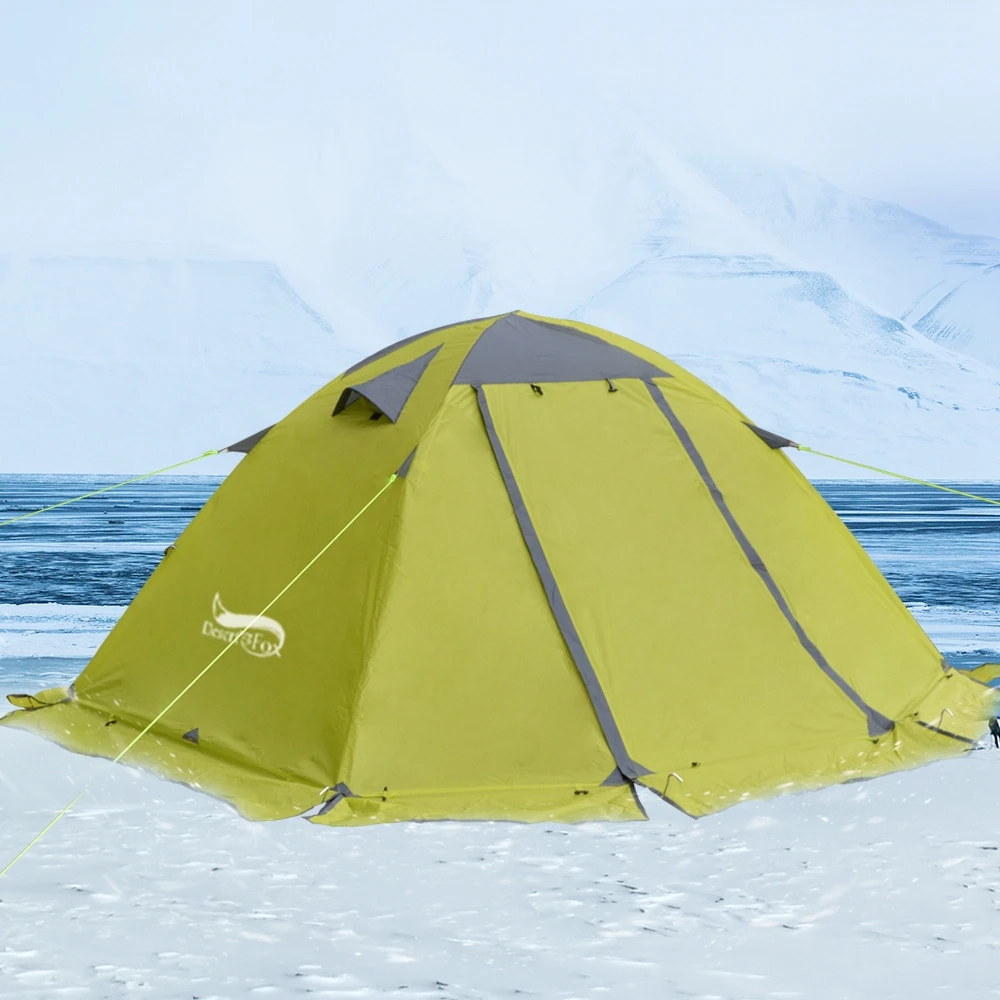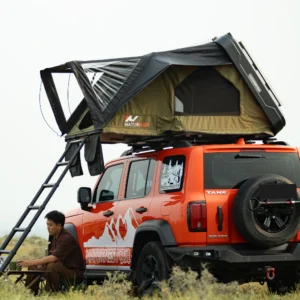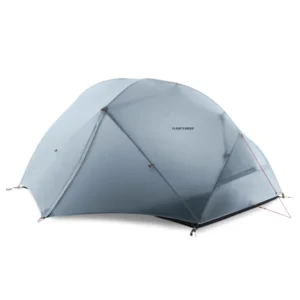Introduction
A 4-season tent is a specialized shelter engineered specifically for extreme weather conditions including heavy snow, high winds, and very cold temperatures. Despite what the name suggests, these robust shelters aren’t designed for year-round comfort—they’re built to withstand nature’s most challenging elements when other tents would collapse.
Many outdoor enthusiasts mistakenly believe that “4-season” means these tents are ideal for camping in spring, summer, fall, and winter. In reality, they’re specifically engineered for the harshest environments: mountaineering expeditions, winter backcountry adventures, and high-altitude camping where survival depends on your gear’s reliability.
Throughout this guide, we’ll explore what truly defines these weather fortresses, their essential features, how they compare to standard 3-season tents, and when investing in this specialized equipment becomes necessary rather than optional. Understanding compact shelter options for two campers is essential, but knowing when conditions demand something more robust can be a matter of safety, not just comfort.
What Defines a True 4-Season Tent?
At its core, a 4-season tent is a shelter designed with one primary purpose: providing reliable protection in the most extreme environmental conditions nature can deliver. These aren’t simply “winter tents”—they’re engineered survival tools for situations where shelter failure isn’t an option.
What truly separates these specialized shelters from standard camping tents is their uncompromising design philosophy that prioritizes structural integrity above all else. While typical tents balance various factors like weight, space, and protection, four-season tents built for durability make a clear choice: strength first, with other considerations secondary.
The defining characteristics that make a true 4-season tent include:
- Structural design that can withstand 60+ mph (97+ kph) winds
- Ability to shed heavy snow loads without collapsing
- Materials that maintain integrity during extreme temperature fluctuations
- Construction focused on preventing heat loss while managing condensation
- Reinforced anchor points that won’t fail when your life depends on them
These tents serve as your life-support system when the environment becomes hostile—whether that’s during a surprise blizzard at 12,000 feet (3,658 meters), sustained winter winds whipping across an exposed ridgeline, or temperature plummets that make adequate shelter non-negotiable.
Decoding Tent “Seasons”: Weather Capability vs. Calendar Confusion
The tent industry’s “season” terminology often creates confusion among buyers. A 4-season tent doesn’t actually perform optimally across all four calendar seasons—rather, the number refers to its weather capability in extreme conditions, particularly winter and high-mountain environments.
In fact, using a 4-season tent during summer camping can be uncomfortably hot and stuffy due to the limited ventilation that helps these tents retain heat during frigid conditions. The reduced mesh and heavier materials that make these shelters excel during a snowstorm become liabilities when temperatures rise.
What these tents truly excel at is creating a secure shelter in scenarios where standard tents would fail catastrophically: heavy snow loads that can collapse a structure, fierce winds that can snap poles or rip fabric, and bitter cold that requires substantial insulation. Understanding multi-season tents for variable climates helps clarify that the ideal tent depends on the specific conditions you’ll face rather than trying to find one solution for every scenario.
Essential Features of 4-Season Tents: Building a Weather Fortress
Robust Pole Structure
The foundation of any 4-season tent is its pole architecture, which differs dramatically from lighter-weight options:
- Thicker pole diameter (typically 9-10mm or 0.35-0.39 inches) compared to 3-season tents (typically 8.5mm or 0.33 inches)
- Higher quantity of poles creating multiple intersection points for structural integrity
- Premium aluminum alloys like 7001-T6 or DAC Featherlite NSL offering superior strength-to-weight ratio
- Geometric designs (geodesic, dome, or tunnel) that distribute stress and shed snow naturally
These stronger pole systems prevent collapse under snow loads and maintain tent stability even when winds reach dangerous speeds. The multiple crossing points in geodesic designs specifically create triangular support structures that resist deformation under pressure.
Heavy-Duty, Weatherproof Fabrics
Four-season tents utilize significantly more robust materials:
- Higher denier fabrics (typically 50-70D or higher) compared to lightweight tents (often 15-30D)
- Ripstop nylon or polyester construction that prevents small tears from spreading
- Enhanced waterproofing with higher hydrostatic head ratings (typically 1500-3000mm)
- UV-resistant treatments to prevent degradation during high-altitude exposure
These materials add weight but provide essential protection when conditions deteriorate. The durability difference becomes apparent when typical 3-season tents might tear under similar stress loads.
Strategic Design Elements
Every aspect of a 4-season tent’s design serves a purpose:
- Full-coverage rainflies extending to the ground, eliminating vulnerable gaps
- Snow skirts (also called valances) that prevent wind-driven snow from entering
- Reinforced guy-out points, often featuring multiple attachment layers
- Low-profile shapes that deflect rather than catch wind
- Smaller overall footprint to fit on narrow mountain ledges or limited flat terrain
These design elements work together to create a secure microenvironment within the harshest conditions imaginable.
Specialized Ventilation System
Ventilation in 4-season tents represents a careful balance:
- Strategic placement of limited mesh panels to reduce heat loss
- Adjustable vents positioned to release moisture while minimizing snow entry
- Double-wall construction creating an insulating air barrier
- Options to completely seal the shelter during extreme conditions
This ventilation approach helps manage the critical challenge of condensation, which can be particularly dangerous in winter when moisture can freeze inside your shelter.
Our heavy-duty 4-season tent collection features these robust construction elements, providing critical protection when conditions demand uncompromising performance.
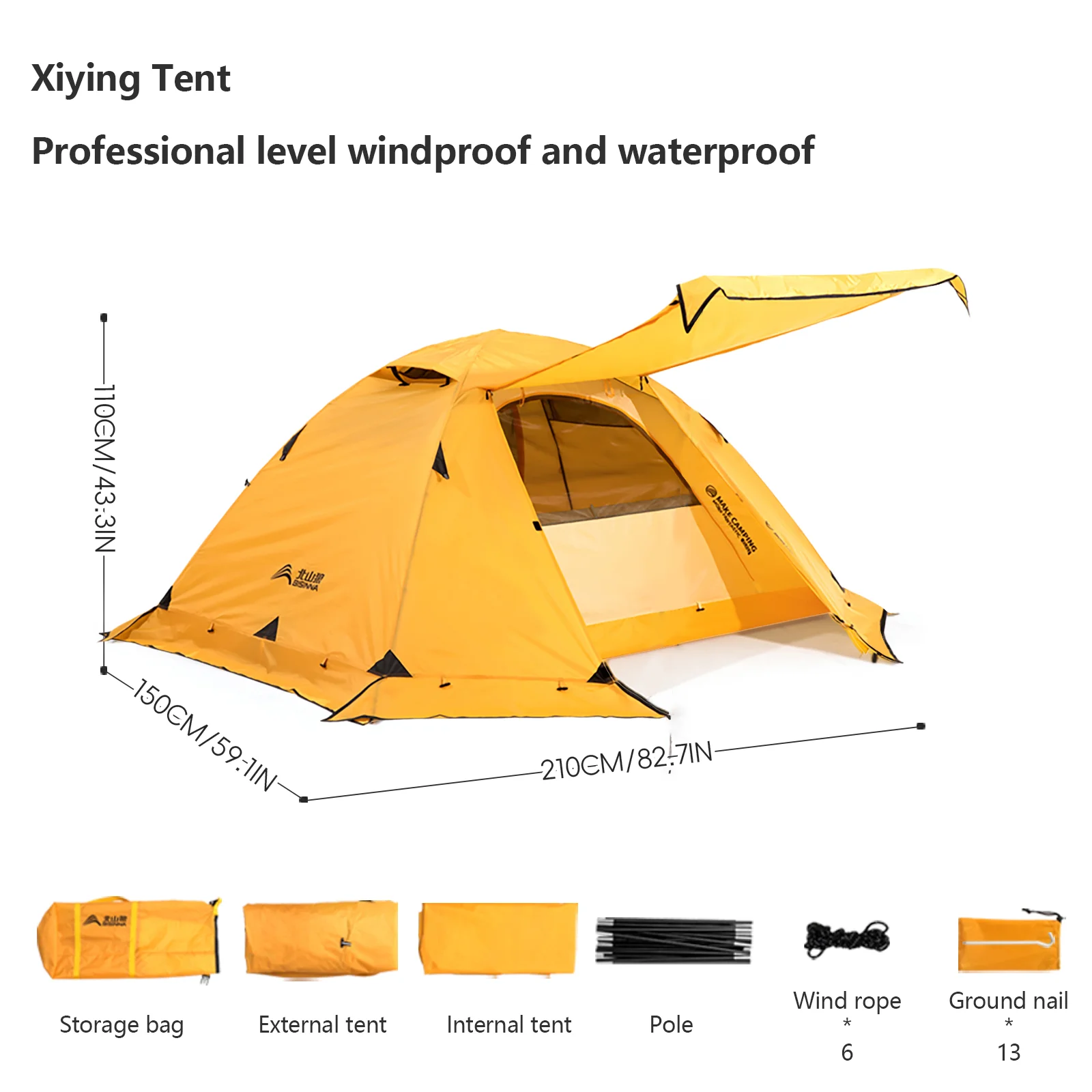
4-Season Tents vs. 3-Season Tents: The Definitive Comparison
| Feature | 4-Season Tents | 3-Season Tents |
|---|---|---|
| Primary Use | Extreme winter conditions, high mountains, heavy snow, high winds | Spring through fall camping, moderate weather, light precipitation |
| Pole Structure | Numerous (4-5+) heavy-duty poles forming dome or geodesic shapes | Fewer (2-3) lightweight poles in simple designs |
| Fabric Weight | Heavy (50-70+ denier) | Light to moderate (15-40 denier) |
| Ventilation | Limited mesh, adjustable vents | Abundant mesh for airflow |
| Weather Resistance | Snow-shedding design, ground-to-ground rainfly | Rain protection with partial coverage rainfly |
| Wind Performance | Can withstand 50+ mph (80+ kph) winds | Typically rated for 30 mph (48 kph) winds |
| Average Weight | 6-10 pounds (2.7-4.5 kg) | 3-5 pounds (1.4-2.3 kg) |
| Packed Size | Larger, bulkier | More compact |
| Typical Cost | $400-$1000+ | $200-$500 |
The fundamental difference between these tent types lies in their design philosophy. A 3-season tent balances comfort, weight, and protection against moderate weather, while 4-season tents prioritize structural integrity above all else.
This difference manifests in how the tents handle challenging conditions. A 3-season tent might withstand a brief, light snowfall but could collapse under sustained accumulation. Similarly, while a 3-season tent offers adequate rain protection, it isn’t designed to handle the combination of precipitation, wind, and cold that creates dangerous conditions in alpine environments.
The ventilation approaches also differ significantly. Three-season tents maximize airflow to keep occupants comfortable in warm weather, with extensive mesh panels. Four-season tents carefully control ventilation to balance moisture management with heat retention, recognizing that in extreme cold, too much airflow creates dangerous heat loss.
Understanding what makes a tent windproof reveals why 4-season tents excel in mountain environments—their lower profiles, stronger poles, and multiple guy-out points work together to withstand forces that would destroy standard camping tents.
When a 4-Season Tent is Non-Negotiable: Essential Use Cases
Winter Mountaineering and Alpine Expeditions
When ascending above treeline in winter conditions, a 4-season tent becomes an essential safety tool rather than a luxury. At higher altitudes, winds can intensify dramatically without warning, temperatures drop precipitously, and weather systems can trap climbers for days. In these environments, the robust construction of a 4-season tent provides critical protection when retreat isn’t immediately possible.
The exposed terrain of alpine zones creates unique challenges—limited natural windbreaks, difficult anchoring in rocky or icy terrain, and the possibility of becoming tentbound during storm cycles. Four-season tents are specifically designed for these scenarios, with features like multiple guy-out points, snow skirts to prevent drift infiltration, and reinforced anchoring systems.
Extended Snow Camping
Spending multiple nights in snow-covered terrain requires specialized shelter considerations. Snow loading—the accumulation of snow on your tent—can add significant weight throughout a storm, potentially collapsing standard tent structures. Four-season tents feature steeper wall angles and stronger pole systems that shed snow naturally and withstand the added weight.
The constant freeze-thaw cycles in winter camping also stress tent materials in ways that regular camping doesn’t. Materials that remain flexible in sub-freezing temperatures, sealed seams that don’t leak when snow melts and refreezes, and ventilation systems that prevent dangerous condensation buildup are all critical features found in quality winter camping tents.
Extreme Wind Environments
Certain landscapes—exposed ridgelines, coastal areas, desert plateaus, and treeless tundra—regularly experience sustained high winds that standard tents simply cannot handle. In these environments, 4-season tents provide:
- Lower profiles that reduce wind resistance
- Multiple crossing poles that maintain structural integrity under pressure
- Reinforced anchor points that won’t tear out
- Specialized guyline systems to distribute force
When winds exceed 40 mph (64 kph), the difference between a 3-season and 4-season tent isn’t about comfort—it’s about whether your shelter remains standing or fails completely.
Multi-Day Backcountry Ski Tours
Multi-day winter traverses combine many challenging elements: potential for heavy snow, cold temperatures, wind exposure, and the need to establish camp in varied terrain. Additionally, the risk of becoming weatherbound increases with trip duration, making shelter reliability paramount.
Four-season tents provide the security needed when weather forces extended stays at a single campsite, while their snow-specific features (like vestibules sized for winter gear storage and entrances designed to minimize snow entry) become increasingly valuable as the trip extends.
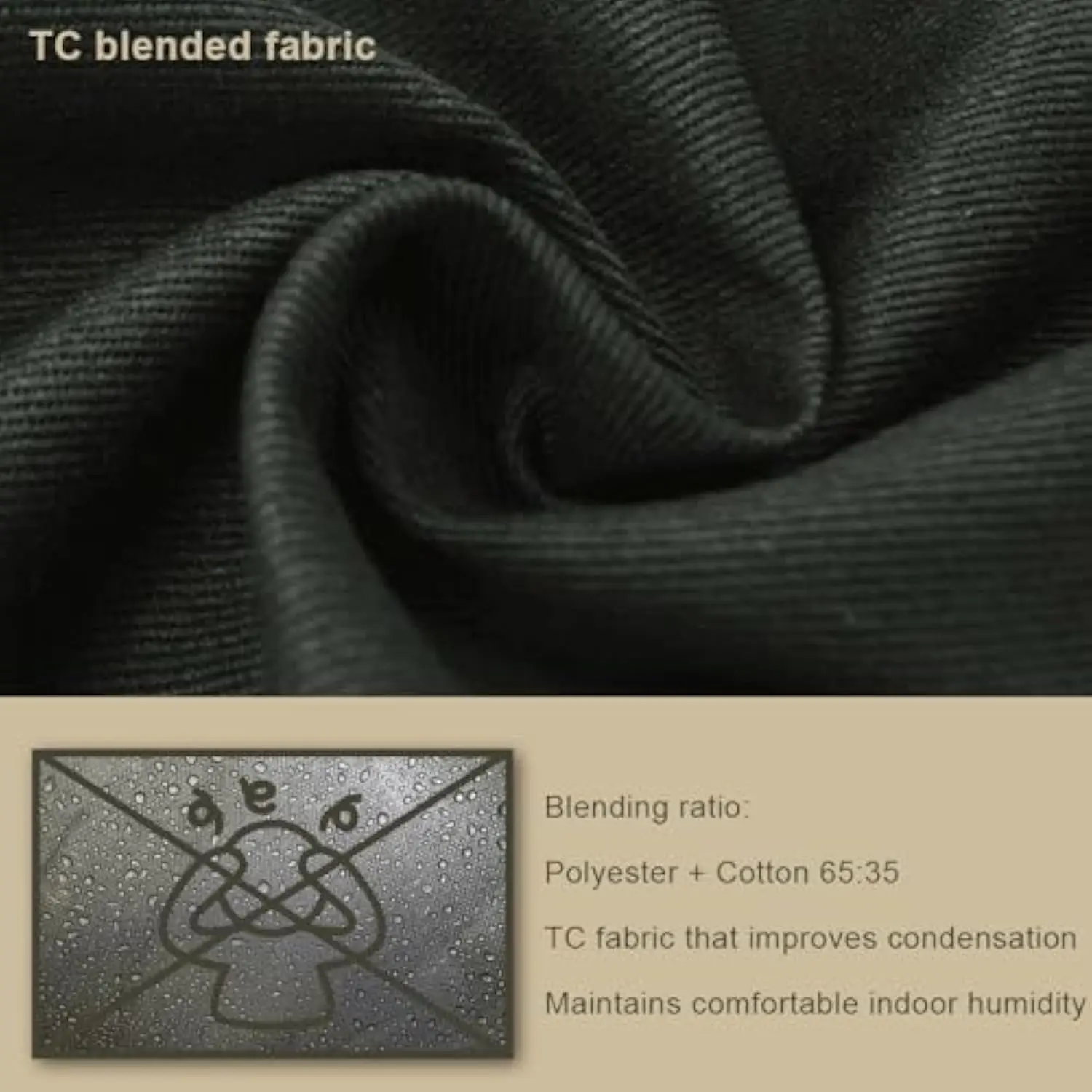
Scenarios Where 4-Season Tents May Be Overkill
While these robust shelters excel in extreme conditions, there are many scenarios where their specialized features become disadvantages:
- Summer backpacking trips where their limited ventilation creates uncomfortable internal condensation and overheating
- Car camping at established campgrounds with moderate weather forecasts
- Desert environments where nighttime cooling requires maximum ventilation
- Weight-sensitive activities like ultralight backpacking where the additional 2-4 pounds (0.9-1.8 kg) represents significant burden
- Budget-conscious trips where the substantial price premium doesn’t justify the protection level needed
In many three-season conditions, alternatives exist that provide adequate protection without the penalties associated with 4-season designs. Site selection strategies (choosing natural windbreaks, proper tent orientation), supplemental guylines, and mastering two-person lightweight tent setup techniques can extend the usability of standard tents into shoulder seasons.
The Price of Protection: Weighing Costs vs. Benefits
Financial Investment
Quality 4-season tents represent a significant financial commitment, typically ranging from $300-$1000+ (£240-£800+), with premium expedition models commanding even higher prices. This substantial cost difference compared to 3-season alternatives reflects the specialized materials, enhanced engineering, and rigorous testing these shelters undergo.
For occasional winter campers or those venturing into extreme conditions only rarely, this investment may be difficult to justify. However, for regular winter adventurers, the cost-per-use metric becomes more favorable over time, especially when considering these tents often last longer due to their robust construction.
Physical Costs
Beyond financial considerations, 4-season tents impose physical costs:
- Weight penalties (typically 6-10 pounds/2.7-4.5 kg vs. 3-5 pounds/1.4-2.3 kg for 3-season)
- Larger packed volume occupying precious backpack space
- More complicated setup requiring additional time and effort
- Reduced interior space relative to weight (reinforcement adds weight but doesn’t expand living area)
These physical costs become especially relevant during approaches to remote camps, where every additional ounce requires energy to transport.
Performance Benefits
Balancing these costs are the undeniable performance advantages:
- Significantly expanded safety margins in unpredictable mountain weather
- Extended lifespan when properly maintained (often lasting 2-3 times longer than lightweight alternatives)
- Ability to camp comfortably in locations and seasons inaccessible with lesser equipment
- Mental peace knowing your shelter can withstand deteriorating conditions
For those regularly pushing into winter environments or mountain terrain, these benefits often outweigh both the financial and physical costs, making 4-season winter 2-person tents a worthy investment in both safety and adventure possibilities.
Smart Compromises: Alternative Solutions for Borderline Conditions
Enhanced 3-Season Options
For those frequently camping in moderate conditions with occasional exposure to challenging weather, “3+ season” or “extended season” tents offer a valuable middle ground:
- Stronger pole systems than standard 3-season tents
- More extensive rainfly coverage
- Reduced mesh compared to summer-focused designs
- Better stake-out and guyline options
These hybrid designs provide improved stability in moderate snow and wind while avoiding the full weight and ventilation penalties of true 4-season shelters.
Adaptation Strategies
Several techniques can extend the usability of standard tents in challenging conditions:
- Adding supplementary guylines to improve stability
- Using snow anchors or buried objects (deadmen) instead of standard stakes
- Creating windbreaks with natural features or snow walls
- Selecting protected campsites that minimize exposure
These adaptations work best when weather challenges are moderate and temporary rather than severe and sustained.
Hybrid Approaches
Alternative shelter systems can sometimes bridge the gap between tent types:
- Mountaineering bivouac sacks provide emergency protection with minimal weight
- Snow caves or igloos can supplement tent protection in deep snow environments
- Pairing a robust tarp with a winter sleeping system for ultralight winter camping
Choosing the ultimate compact shelter for two often involves assessing these hybrid options against your specific needs, risk tolerance, and expected conditions.
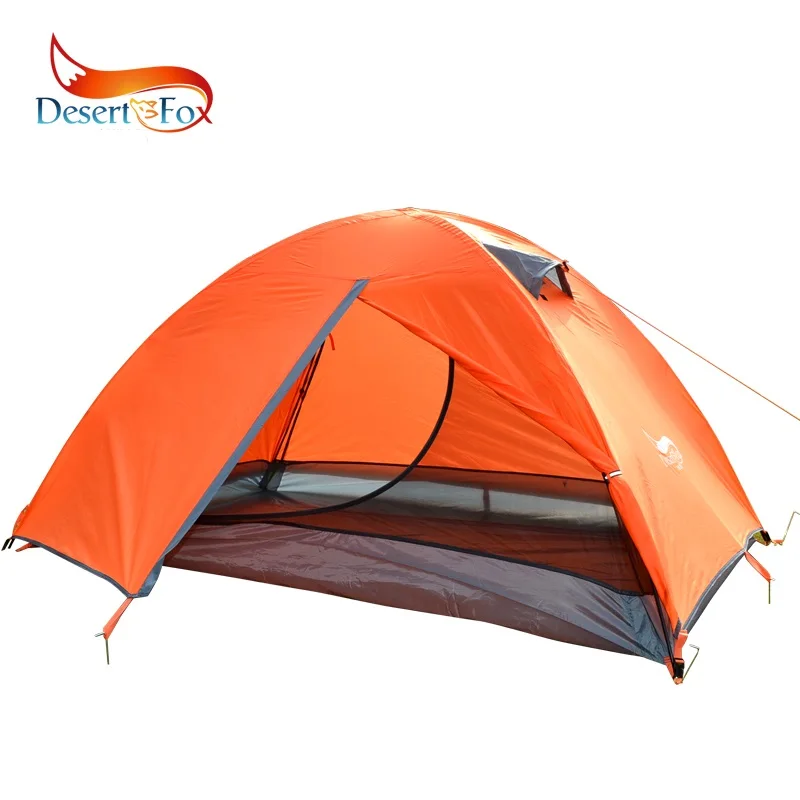
Making the Right Choice: Is a 4-Season Tent Right for You?
To determine whether investing in a 4-season tent makes sense for your outdoor pursuits, honestly assess these key questions:
Weather Exposure: What are the most challenging conditions you regularly encounter? Will you frequently face snow loads, sustained high winds, or sub-freezing temperatures?
Trip Locations: Do your adventures take you to exposed alpine terrain, high mountains, or winter landscapes where shelter failure creates genuine safety risks?
Weight Sensitivity: How important is minimizing pack weight for your typical activities? Can you accept carrying extra pounds for enhanced protection?
Budget Reality: Can you justify the significant price premium for specialized equipment based on your usage patterns?
Risk Assessment: In your typical environments, what are the consequences of shelter failure? How far are you from assistance if your tent fails?
If you primarily camp in established campgrounds during fair weather but occasionally venture out in shoulder seasons, adapting a quality 3-season tent might be sufficient. However, if you regularly pursue winter mountaineering, backcountry skiing, or high-altitude adventures, a true 4-season tent from our mountaineering tent collection becomes a justified investment.
Consider renting a 4-season tent for an initial winter trip to evaluate whether the benefits justify the purchase. Remember that when it comes to safety equipment—which is what a 4-season tent truly is—investing in quality pays dividends when conditions deteriorate.
Heavy Duty 4 Season Tent, Mountaineering Tent, Winter Camping Tent
$870.40 Select options This product has multiple variants. The options may be chosen on the product pageUltralight Backpacking Tent, Ultralight Dome Tent, Winter Camping Tent
Price range: $369.63 through $370.07 Select options This product has multiple variants. The options may be chosen on the product pageHeavy Duty 4 Season Tent, Ultralight Freestanding Tent, Winter Camping Tent
$3,722.66 Select options This product has multiple variants. The options may be chosen on the product pageHeavy Duty 4 Season Tent, Winter Camping Tent
$638.69 Select options This product has multiple variants. The options may be chosen on the product pageHeavy Duty 4 Season Tent, Winter Camping Tent
$5,109.59 Select options This product has multiple variants. The options may be chosen on the product pageBackpacking Tent with Vestibule, Heavy Duty 4 Season Tent, Trekking Pole Backpacking Tent, Winter Camping Tent
Price range: $257.52 through $537.51 Select options This product has multiple variants. The options may be chosen on the product page
The right tent choice balances protection requirements against the penalties of overbuilt equipment. By accurately assessing your needs rather than being swayed by marketing terminology, you can make an informed decision that enhances both safety and enjoyment in the outdoors.
Conclusion
A true 4-season tent represents specialized protection engineered specifically for extreme environmental challenges—not simply a tent for all calendar seasons. These robust shelters excel in situations where lesser equipment would fail catastrophically, providing crucial protection when exposed to heavy snow loads, fierce winds, and bitter cold.
Understanding that “4-season” designates capability in harsh conditions rather than year-round comfort helps clarify when these specialized shelters become necessary versus optional. For many outdoor enthusiasts, the best approach isn’t necessarily owning a single tent for all conditions, but rather matching their shelter to the specific environments they’ll encounter.
When venturing into extreme conditions, there’s wisdom in prioritizing safety over savings and protection over packability. For those who regularly push into winter landscapes or high mountains, a quality 4-season tent becomes not just camping gear but essential safety equipment. For others, understanding camping shelter options for two across various conditions helps identify the most appropriate solutions for each adventure.

